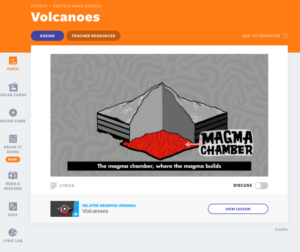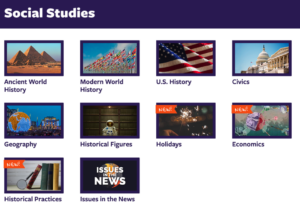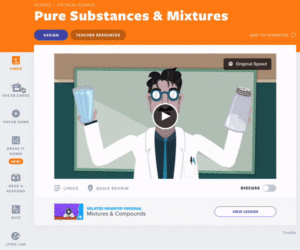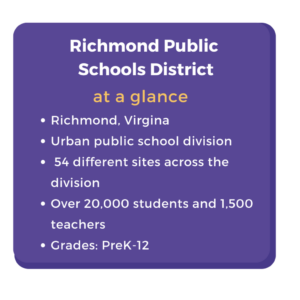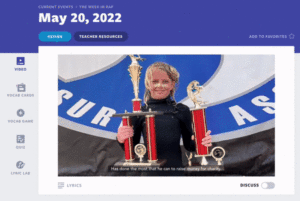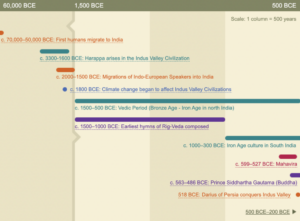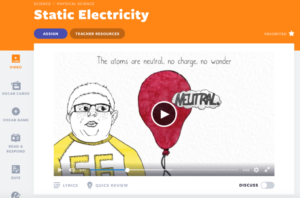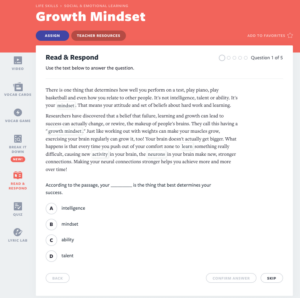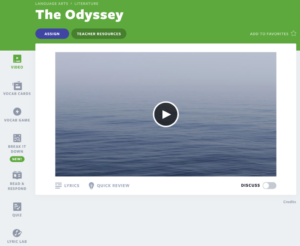From posing a question to playing a game, everything done in the classroom generates student data. The problem? Capturing and analyzing that data to improve student outcomes and drive instruction.
Just like any other tool in your educational tool belt, analyzing student data to drive instruction is the next step in transformational outcomes for learners. The process can seem overwhelming—deciding what student data you need, determining how you will gather that data, understanding how to analyze that data, and what to do with what you have—it’s a lot of stress on an already cluttered plate. Luckily, a plethora of tech has your back, including Flocabulary.
Flocabulary offers educational hip-hop videos and instructional activities that promote literacy and spark creativity. Flocabulary accelerates learning, engagement, vocabulary acquisition, and comprehension with relevant, rigorous educational videos both students and teachers love.
New to Flocabulary? Teachers can sign up for a trial to access our lesson videos and assessment activities. Access to the Analytics Dashboard requires a Flocabulary Plus District license. Get in touch with us to learn more about Flocabulary Plus.
Why is student data important?
Using data to drive instruction has clear benefits for both students and educators! By collecting, analyzing, and implementing student data, I was able to make sure what I was teaching in my classroom was what my students needed and that I was delivering it in a way that worked for them. Data tracking for teachers and administrators is now easier than ever with the many tech tools available. Working with other teachers who taught the same subject meant we were able to share effective methods for teaching different topics (because not everyone loves cells). Without gathering this student data, analyzing, and sharing it, we couldn’t have been able to support our students in ways that impacted their educational outcomes.
Deciding what to teach and how to teach it based on student data means that teachers are tailoring their teaching. At the district level, armed with student data, administrators can adapt the curriculum to better suit students’ needs. Analyzing student data on the scale of schools and districts helps identify opportunities to drive high-quality instruction in every classroom and building.

Student data is key to effective teaching and building supportive curricula. But collecting, analyzing, and implementing lots of student data is overwhelming for anyone in education.
How do you collect student data in the classroom?
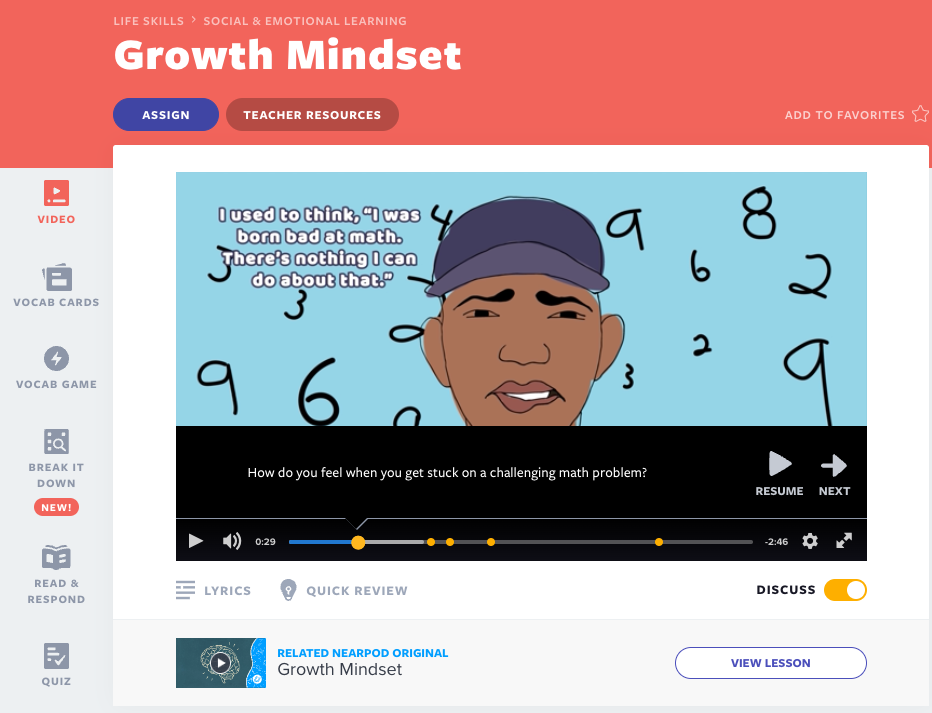
1. Collect information in real-time through tech tools
Gathering student data is best achieved through assessments, which don’t necessarily have to be in the form of a “test” but can encompass any method you use to collect information about your students’ understanding of what you are teaching. Some simple examples include asking for a show of hands or using a video with a built-in component for checking student understanding.
2. Provide immediate feedback
Edtech tools with easy-to-integrate formative assessments, such as Flocabulary, quickly collect and analyze every student’s understanding while sharing feedback. A research study from Bertram Opitz on delayed and immediate feedback found that immediate feedback impacts learning more significantly than delayed feedback. The quicker they know they’re on the right track, the easier it is to move down that path. Flocabulary’s activities like Read & Respond and the Vocab Game have students complete the question or prompt, after which it’s revealed whether or not they got the correct answer.
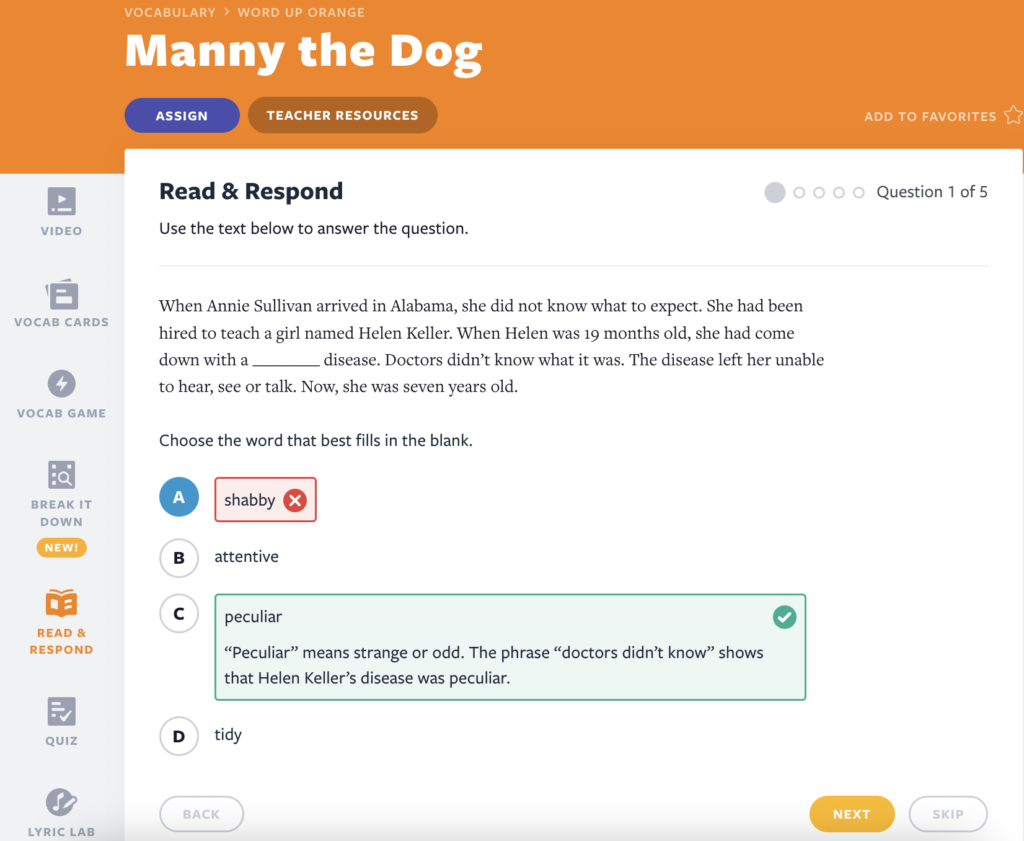
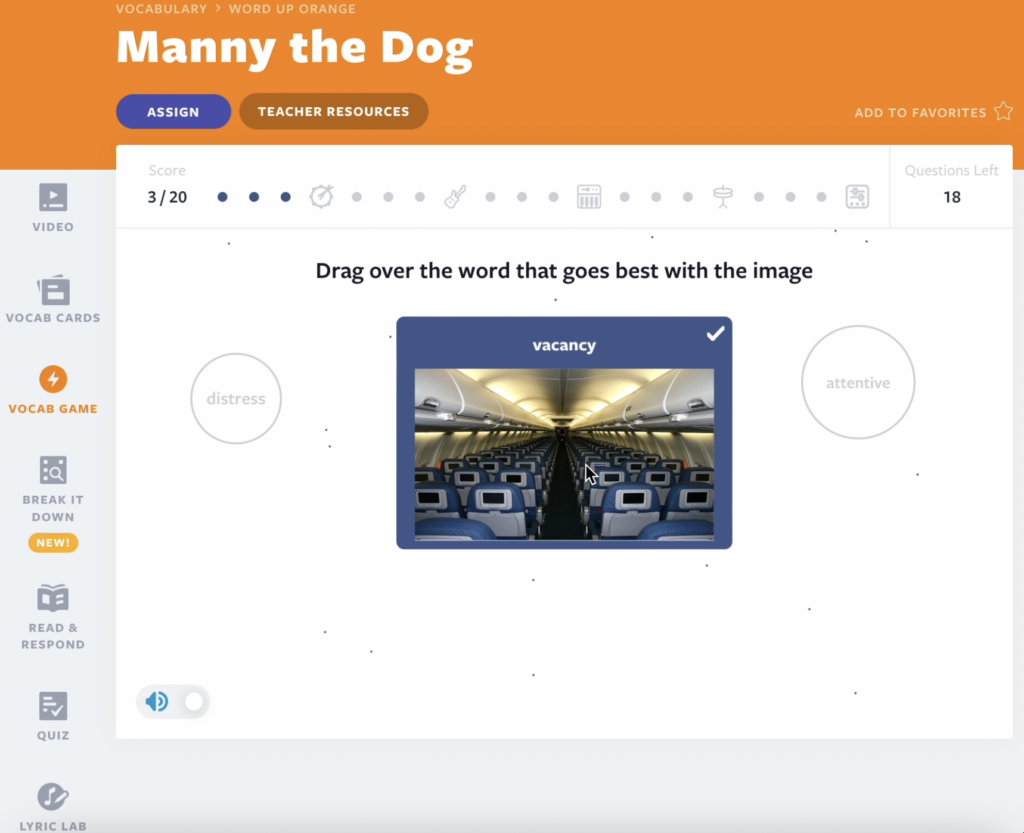
3. Diagnostic assessments
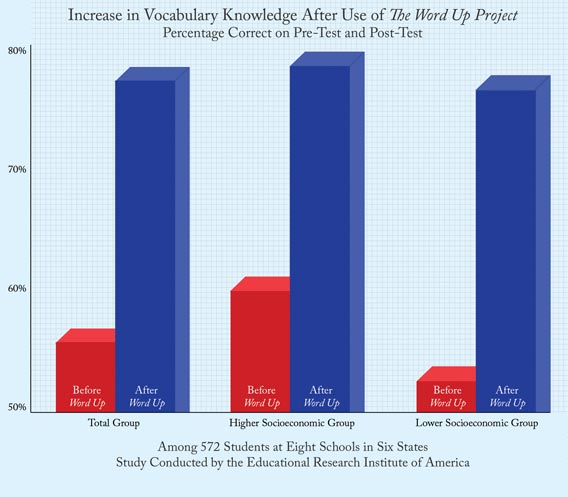
Diagnostic assessments are a great way to see where students stand. Pre- and post-tests like those provided in the Word Up Project help determine where students are starting from at the beginning of the year or unit. With a comprehensive and award-winning vocabulary and reading program for teaching Tier 2 words, assessing student mastery is a cinch. Using a research-based, standards-aligned resource proven to raise scores on state reading tests to determine what level is appropriate for your students means you’re spending classroom time wisely and setting attainable goals.
Data tracking for teachers and administrators can be overwhelming. You could collect so much data from your students, but as always, the next step is asking—now what? What do you do with all of this great student data? Analysis!
How to analyze student data to elevate instruction
American humorist Mark Twain famously said, “Data is like garbage. You had better know what you are going to do with it before you collect it.”. If you collect a ton of data from your students but don’t have a plan for it, you have a whole lot of nothing. The intent of collecting student data is to use that data to drive instruction, which means analyzing and deciding what to do with that information.
1. Track meaningful data that is proven to have impacts across the curriculum
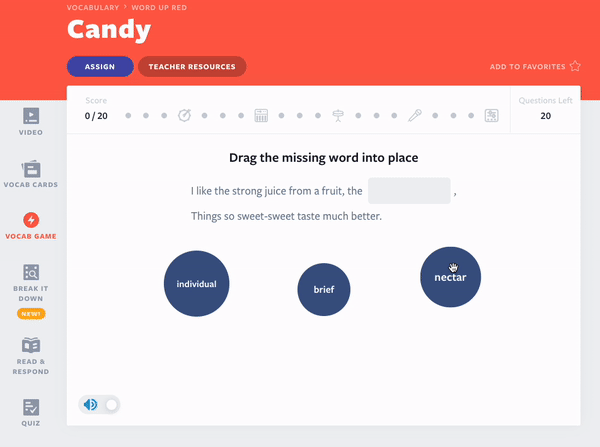
Education time and resources are always limited, especially considering the fact that you’re only one person. When analyzing data with a broad impact on students’ overall achievement, it’s crucial to purposefully utilize data without becoming overwhelmed by the collection and analysis process. Instead of testing elementary students on every single topic assessed at the high school level, it makes more sense to focus evaluations on essential learning skills that lay the foundation for further learning.
Research shows that vocabulary is the biggest predictor of reading comprehension. Students need to know the meanings of 90-95% of words in a text to comprehend it, and vocabulary is an especially strong predictor of comprehension of informational text (Nagy & Scott, 2000; Yildirim, Yildiz & Ates, 2011). Flocabulary incorporates general academic and subject-specific vocabulary instruction into every lesson and represents a valuable cross-section for identifying areas where a student needs support. Building their abilities to acquire knowledge is a smart and efficient use of their time and an empowering moment for every student. Flocabulary intentionally scaffolds this vocabulary acquisition across the curriculum in a highly engaging and relevant manner for students.
2. Use tech tools that provide actionable insights in a digestible format
We know that not everyone loves spreadsheets. Just like your students don’t need to know the entire pedagogical framework behind why they’re coloring the mitochondria red, not everyone needs to dig into pages and pages of student results. Data analysis for teachers and administrators should be simple and quick. We just don’t have the time! Providing the information needed to improve your educational practice and better understand students’ outcomes is essential to your chosen tools. Your data tools should have visuals and suggested actions and be backed by data best practices. The Flocabulary Analytics Dashboard provides just that!
Flocabulary’s Analytics Dashboard
Using our new analytics dashboard, school and district administrators on Flocabulary Plus district licenses can see the impact of Flocabulary on their students’ vocabulary acquisition across the curriculum and visualize opportunities for educators to focus their instruction.
On the new Analytics section of the homepage, you can view the average number of word exposures per student in your district and the number of words students have been exposed to. You’ll also see how often students’ comprehension of vocabulary words has been explicitly assessed through word practice items like the Vocab Game and the level of proficiency students are showing on these words based on their practice scores. Administrators can view the number of exposures to vocabulary words students have had across the curriculum, providing insight into where Flocabulary is implemented across departments and highlighting opportunities for growth.
Administrators can also compare students’ vocabulary mastery levels across various subjects, evaluate advancement in alignment with district goals, and pinpoint areas that need the district’s attention to reach goals.
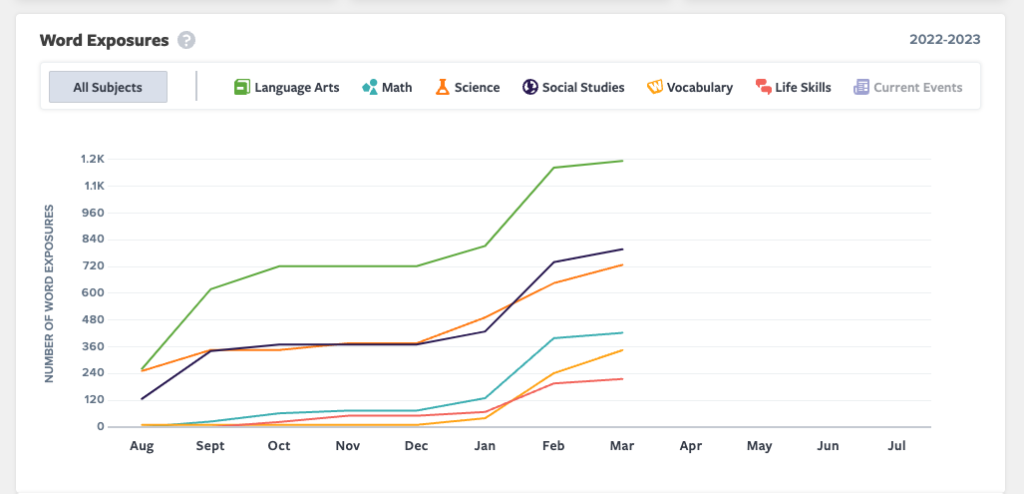
With the Flocabulary’s Analytics Dashboard, administrators can drill down to the level needed for the data to become actionable insights, from district to campus to the classroom. Tools like these allow you to share data teachers can then take back to their classrooms to inform their next lesson while also monitoring larger data sets for trends and opportunities to improve instruction and implementation as a larger operation.
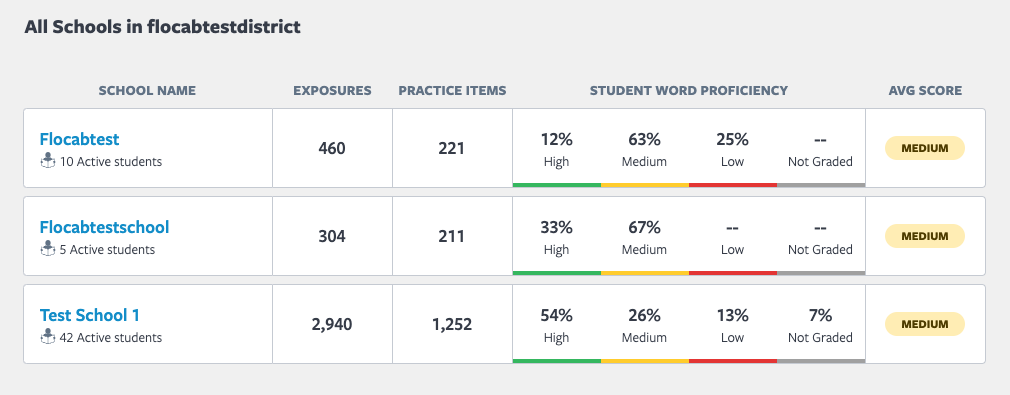
3. Identify and share best practices with colleagues
Data serves a purpose beyond just students; it enables teachers to reflect on how and what they’re teaching. Utilizing high-quality tools that facilitate the analysis of the relevant and applicable student data you’ve collected enhances your practice as an educator and better supports your students.
However, remember that sharing is caring! The ability of others to comprehend and digest these insights is the culmination of all this valuable work.
Administrators can improve district outcomes by implementing ideas such as:
- Compare buildings across the district and review differences in implementation
- Look across departments to determine if different teachers have strengths they could share with their peers to ensure all students benefit from the great ideas in your classrooms
- Use the data gathered to guide your district’s professional development and policy to better support both the students and staff working so hard in your building daily
Visual outputs like the Flocabulary Dashboard streamline the sharing and implementation of these best practices. By comparing Flocabulary implementations across schools and classes, administrators can identify campuses, grade levels, and educators who are maximizing the impact of Flocabulary. Take the next step by gathering best practices to share with the rest of the school or district, assessing the level of word proficiency at each school and within each class, thereby identifying areas of strength and those needing intervention.
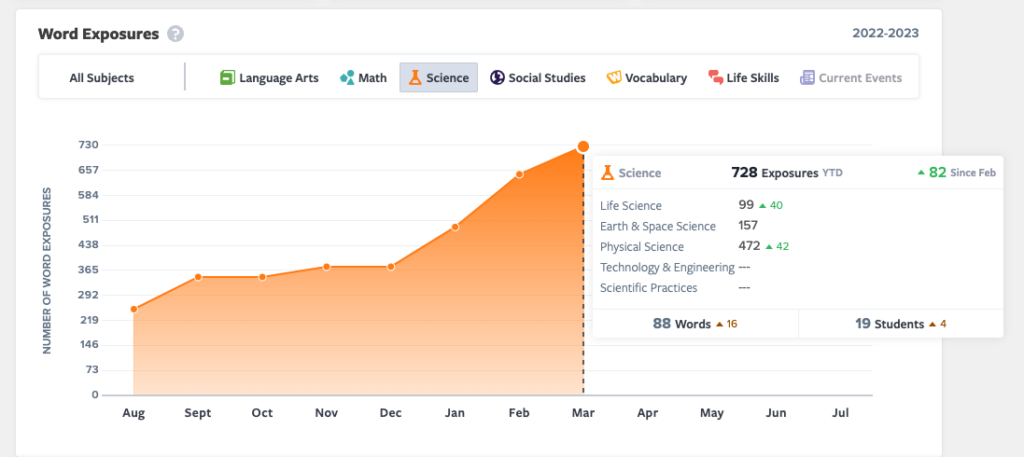
Start collecting and analyzing student data to drive instruction
Analyzing student data to drive instruction is a transformational practice that, if done well, can save you time and support student growth through high-quality instruction on the classroom and district level. As you turn the information on student progress and learning captured by formative and diagnostic assessments into insight and action, you empower yourself to take ownership of your instruction and better address the needs of your student population.
New to Flocabulary? Teachers can sign up for a trial to access our lesson videos and assessment activities. To access the Analytics Dashboard, you must have a Flocabulary Plus school or district license. Get in touch with us to learn more about Flocabulary Plus.
- SEO Powered Content & PR Distribution. Get Amplified Today.
- PlatoData.Network Vertical Generative Ai. Empower Yourself. Access Here.
- PlatoAiStream. Web3 Intelligence. Knowledge Amplified. Access Here.
- PlatoESG. Automotive / EVs, Carbon, CleanTech, Energy, Environment, Solar, Waste Management. Access Here.
- BlockOffsets. Modernizing Environmental Offset Ownership. Access Here.
- Source: https://blog.flocabulary.com/student-data/
- :has
- :is
- :not
- :where
- $UP
- a
- abilities
- ability
- Able
- About
- academic
- accelerates
- access
- achieved
- achievement
- acquire
- acquisition
- across
- Action
- actions
- activities
- activity
- adapt
- address
- administrators
- advancement
- After
- All
- allow
- already
- also
- always
- an
- analysis
- analytics
- analyze
- analyzing
- and
- answer
- any
- anyone
- applicable
- appropriate
- ARE
- areas
- armed
- AS
- assessed
- Assessing
- assessment
- assessments
- At
- Attainable
- attention
- available
- average
- award-winning
- back
- backed
- based
- BE
- because
- become
- becoming
- been
- before
- Beginning
- behind
- benefit
- benefits
- BEST
- best practices
- Better
- Beyond
- Biggest
- both
- broad
- Building
- built-in
- but
- by
- Campus
- CAN
- candy
- captured
- Capturing
- Cells
- checking
- chosen
- class
- classes
- clear
- collect
- Collecting
- collection
- COM
- compare
- comparing
- complete
- component
- comprehend
- comprehensive
- considering
- correct
- could
- creativity
- crucial
- Curriculum
- dashboard
- data
- data analysis
- data sets
- Deciding
- Delayed
- delivering
- departments
- Determine
- determining
- Development
- differences
- different
- DIG
- Digest
- digestible
- discussion
- district
- do
- done
- Dont
- down
- drive
- each
- easier
- ed
- Education
- educational
- educators
- Effective
- efficient
- ELEVATE
- empower
- empowering
- enables
- encompass
- engagement
- engaging
- Enhances
- ensure
- Entire
- especially
- essential
- Ether (ETH)
- evaluate
- evaluations
- EVER
- Every
- everyone
- everything
- examples
- exposed
- facilitate
- fact
- famously
- feedback
- Focus
- For
- form
- found
- Foundation
- Framework
- from
- further
- game
- gather
- gathered
- gathering
- General
- generates
- get
- gif
- Goals
- going
- grade
- great
- Growth
- guide
- had
- Hands
- Hard
- Have
- help
- helps
- High
- high-quality
- highlighting
- highly
- homepage
- How
- How To
- HTTPS
- i
- ideas
- identify
- identifying
- if
- immediate
- Impact
- impacted
- Impacts
- implementation
- implemented
- implementing
- important
- improve
- in
- include
- Including
- incorporates
- inform
- information
- Informational
- insight
- insights
- instead
- instructional
- intent
- intentionally
- intervention
- into
- IT
- items
- just
- Key
- Know
- knowledge
- larger
- lay
- leaders
- LEARN
- learning
- lesson
- Level
- levels
- License
- licenses
- like
- Limited
- literacy
- Lot
- love
- loves
- make
- MAKES
- manner
- many
- mark
- mastery
- max-width
- maximizing
- meaningful
- meanings
- means
- meant
- method
- methods
- Mitochondria
- Mode
- moment
- monitoring
- more
- move
- much
- must
- my
- necessarily
- Need
- needed
- needing
- needs
- New
- next
- NIH
- nothing
- now
- number
- of
- Offers
- often
- on
- ONE
- only
- operation
- opportunities
- or
- Other
- Others
- our
- outcomes
- overall
- overwhelmed
- ownership
- pages
- path
- per
- person
- plan
- plato
- Plato Data Intelligence
- PlatoData
- playing
- plethora
- plus
- policy
- population
- practice
- practices
- Predictor
- Problem
- process
- professional
- Program
- Progress
- project
- promote
- proven
- provide
- provided
- provides
- providing
- purpose
- question
- Quick
- quicker
- quickly
- reach
- Read
- Reading
- real-time
- Red
- reflect
- relevant
- remember
- represents
- requires
- research
- resource
- Resources
- Respond
- REST
- Results
- Revealed
- review
- right
- rigorous
- Said
- same
- Save
- Scale
- School
- Schools
- scores
- scott
- Section
- see
- seem
- sense
- serves
- Sets
- setting
- Share
- sharing
- should
- show
- showing
- Shows
- sign
- significantly
- Simple
- single
- skills
- smart
- So
- some
- Spark
- Spending
- Staff
- stand
- Starting
- State
- Step
- streamline
- strength
- strengths
- stress
- strong
- Student
- Students
- Study
- subject
- such
- Suit
- support
- supportive
- Supports
- sure
- Take
- taught
- teachers
- Teaching
- tech
- test
- Testing
- than
- that
- The
- the information
- their
- Them
- then
- thereby
- These
- they
- this
- those
- Through
- tier
- time
- to
- Ton
- tool
- tools
- topic
- Topics
- touch
- track
- Tracking
- transformational
- Trends
- trial
- TURN
- understand
- understanding
- unit
- us
- use
- using
- utilize
- Utilizing
- Valuable
- various
- Video
- Videos
- View
- visuals
- was
- Way..
- ways
- we
- WELL
- were
- What
- when
- whether
- which
- while
- WHO
- whole
- why
- will
- with
- within
- without
- Word
- words
- Work
- worked
- working
- year
- you
- Your
- yourself
- zephyrnet

